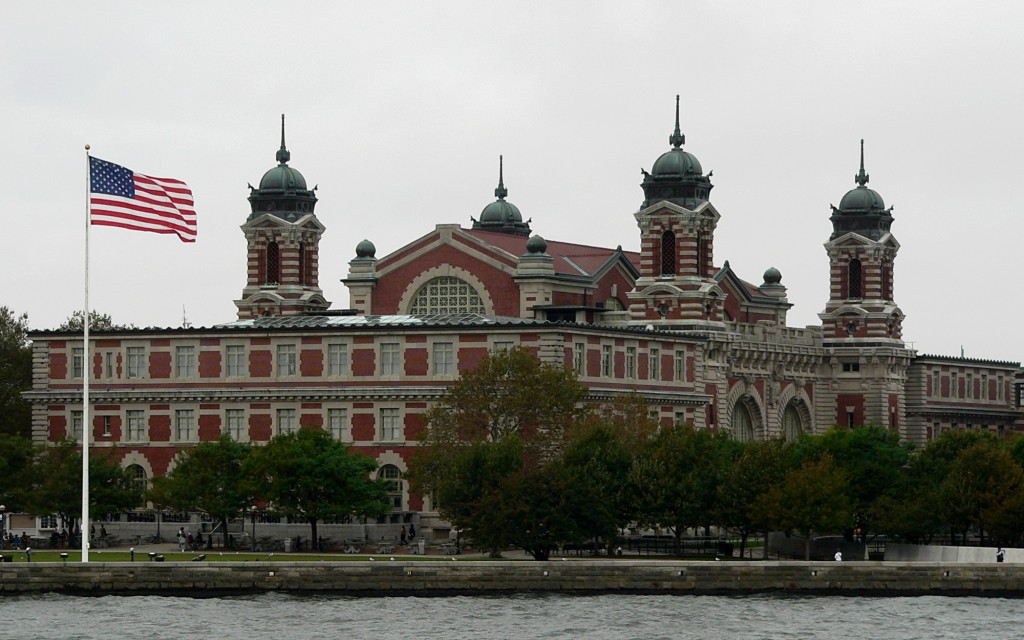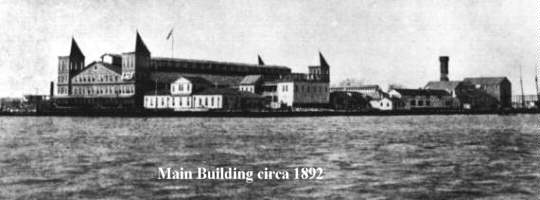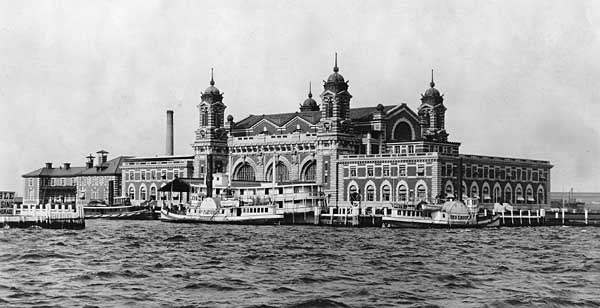Blog Archive
A Belated Birthday Celebration
January 2nd, 2019 was Ellis Island’s 127th birthday!
We talk a lot about Ellis Island here at the Tenement Museum, and for good reason; millions of immigrants, including many residents of 97 Orchard Street, passed through the tiled halls of America’s busiest immigration inspection center from 1892 to 1954.
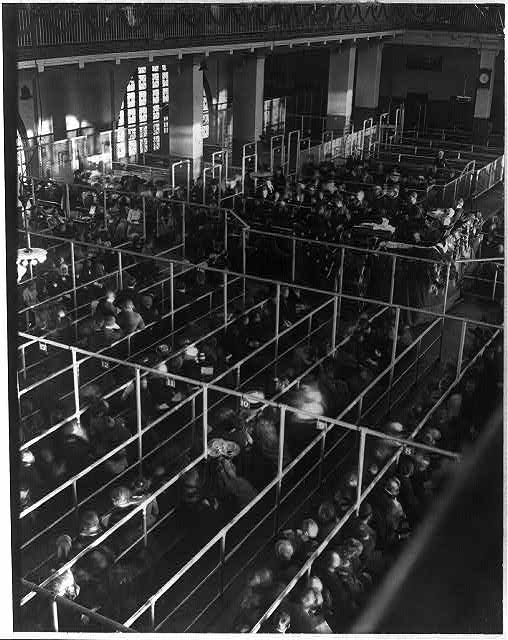
Millions of immigrants were inspected and questioned before entering the United States. Here, immigrants in 1904 waited in “pens” in the Great Hall. Photo courtesy of the Library of Congress.
Ellis Island is named for Samuel Ellis, a Manhattan merchant who purchased the island around the time of the American Revolution, and was previously used for oyster farming, both by the Lenape Native Americans and the Dutch and British colonists. During the early 1800s, Ellis Island served as an American military base and federal arsenal. But of course, it is as an immigration inspection site that Ellis Island is most famous.
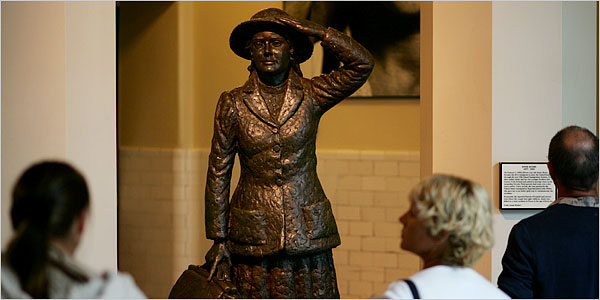
A statue of Annie Moore, the first immigrant processed at Ellis Island, in the Ellis Island Museum. The story and the legend of Annie Moore have become nearly one in the same, and no one knows exactly what happened to the first girl through Ellis Island. Photo courtesy of the New York Times.
On January 2nd, 1892, the first immigrant registered was 15 year-old Annie Moore (no relation to the Moore family of 97 Orchard Street), who, along with her two younger brothers Anthony and Phillip, had come from County Cork, Ireland, to meet her parents who already lived in New York City. As the first immigrant to pass through Ellis Island, Annie received a greeting from immigration officials and, according to the New York Times “a crisp new $10.00 bill.” Annie Moore is remembered with two statues, one in Ireland and one in the Ellis Island Museum.
The 1892 building complex, built of Georgia pine and completely state-of-the-art (for the time) burned to the ground in 1897. While no people were hurt during the blaze, state and federal immigration records dating back to 1855 were lost to the fire. The current, and fireproof, building that we see on Ellis Island today was opened on December 17th, 1900 and processed 2,251 immigrants on its opening day.
Ellis Island actually wasn’t the very first stop that steamships would make in New York City; the ships would dock at the piers on the Hudson or East Rivers, where the first and second class passengers would go through customs and enter the city. First and second class passengers were not subjected to the medical and legal inspections that third class, or steerage passengers, were, the idea being that if an immigrant could pay for the more expensive ticket that they would not become a “ward of the state.” However, first and second class passengers would be sent to Ellis Island for further inspection if they were thought to be sick or have legal problems with their immigration papers.

Inspectors checking immigrants for eye diseases, circa 1913. Photo courtesy of the Library of Congress.
The famous images of weary immigrants entering Ellis Island, carrying their worldly possessions on their backs or in suitcases, show us a little bit of the congestion, confusion, and hope that immigrants faced during their processing at Ellis Island. If an immigrant had proper paperwork and was in reasonably good health, the inspection took between three and seven hours. Officials could ‘diagnose’ diseases in immigrants just by looking at them, and were famous for giving immigrants “six second physicals” to check for physical and mental diseases. If there was a problem with the legality of their immigration or if they were found to have, or even suspected to have, a dangerous disease, the immigrant could be sent to the hospital ward or simply denied entry to the country and sent back to their country of origin.
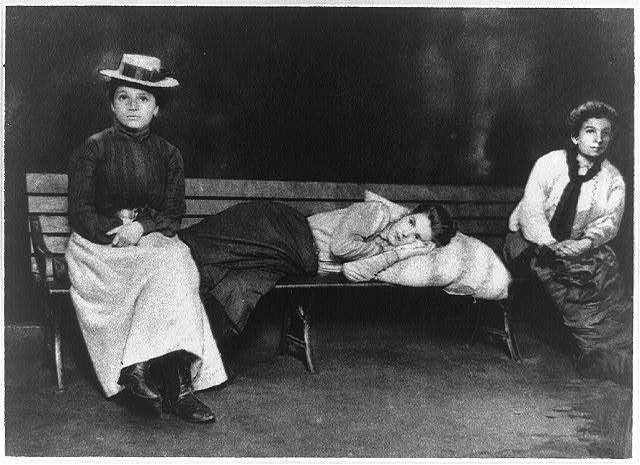
Three women were considered “undesirable” and were denied entry to the United States would be returned to their home countries, circa 1902. Photo courtesy of the Library of Congress.
While the deportations gave Ellis Island the nickname “The Island of Tears,” most immigrants that came through Ellis Island successfully made it to the shores of New York City to begin new lives; many of which happened on the Lower East Side.
After a set of restrictive immigration laws passed in the 1920’s, Ellis Island ceased to be a busy immigration center, and only processed immigrants with paperwork problems, or who were war refugees or displaced by other disasters. In November of 1954, Ellis Island processed their last immigrant, a Norwegian man named Arne Peterssen. Ellis Island then closed. While some of the buildings on Ellis Island have been preserved and opened as a museum, others, including the hospital complex, have been left abandoned.
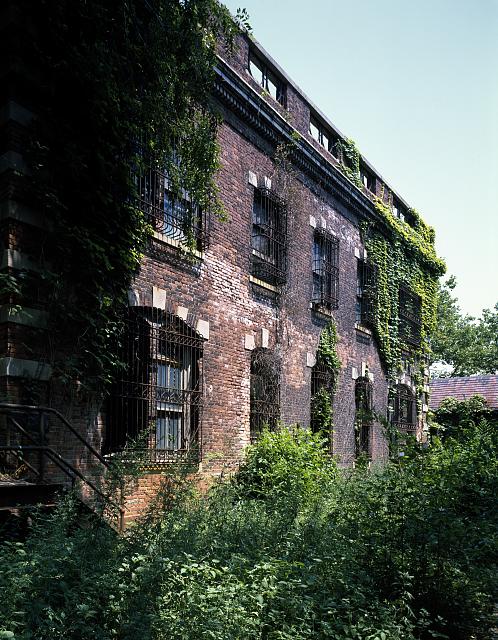
Photographer Carol Highsmith captures how the elements have reclaimed some buildings at Ellis Island. Here, ivy takes over one of the hospital buildings. Photo courtesy of the Library of Congress.
Over 17 million immigrants passed through Ellis Island during its life as an immigration center. On the busiest day in Ellis Island history, April 17th, 1901, 11,747 people entered the country through its “Golden Door.” It is estimated that over 40% of Americans today – that’s over 100 million people – can trace their family history through Ellis Island. You can search Ellis Island records for your family history here!

Immigrants stand for their final discharge from Ellis Island in 1902. After these steps, the immigrants will enter the United States and begin new lives. Photo courtesy of the Library of Congress.
Happy 127th birthday, Ellis Island. You have changed the face of the city, the country, and the world. That deserves quite a cake!
-Written by Lib Tietjen, editing by Katie Heimer
